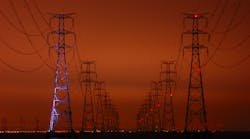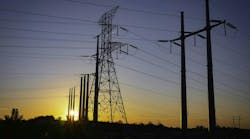In a February 2016 news release, the Bonneville Power Administration (BPA) announced it had submitted its final Environmental Impact Statement (EIS) on the I-5 Corridor Reinforcement Project after six years of analysis and public involvement. The I-5 project involved more than 79 miles of 500-kV line running from the Castle Rock, WA area to Troutdale, Oregon. The estimated cost, according to my research, was pegged at $460 million. BPA Administrator Elliot Mainzer qualified the announcement as needing further study and that the EIS release was by no means the final decision to build the project.
Fast forward to BPA's May 19, 2017 news release: It has decided to cancel the I-5 project citing non-wire alternatives including grid management and energy storage options as the most economical alternative. Administrator Mainzer stated, “The outcome is much bigger than a decision to build or not build this line: We are transforming how we plan for and manage our transmission system and commercial business practices region-wide.”
Though not cited in the announcement, electric demand across most areas of the grid has slowed in recent years driven heavily by energy efficiency improvements including the rapid growth in LED lighting, demand side management and behind-the-meter distributed generation.
Demand on the Decline
Take the March 22, 2017 New England ISO (NEISO) draft Annual Energy and Summer Peak Forecast as a case in point. In their forecast, gross energy demand is expected to rise by only 0.9% per year between 2016 and 2026. As cited in the report, when you consider regional energy efficiency and growth in residential and commercial solar, demand is expected to decline at a clip of nearly 0.6% per year. According to EIA data, since 2008, the average annual kWh consumption per residential customer has trended down from 11,042/kWh/year to a recent annual low of 10,736 kWh/year (down 2.8%) in 2016. The trend is more profound when you consider industrial demand (down 11.5%) per customer over the same period.
Given this backdrop of declining to flat electric demand growth and the long permitting and right-of-way securing process necessary for large new transmission projects, there could be more cancellations on the horizon. It creates a dilemma for utilities who need additional revenue to grow. Investment in transmission is considered an attractive regulated investment, but as interest rates increase and fuel costs tweak upward, it could quickly dampen the year-on-year spending that’s been strong for several years now. My research indicates 143 projects have been suspended or canceled since 2014. Though some of these were highly speculative and enormous undertakings, the total projected spend they represent is $66.9 billion. Of that forecasted spend $48.0 billion (65.8%) was scheduled to come online over the two-year window 2018-19.
Nat-Gas Projects Struggling Too
Along with decisions to not build transmission in this low-electric-demand, low-operating-cost environment, there have been some recent project cancellations and bankruptcies in the news including the May 16, 2017 announcement by Portland General Electric to withdraw its air permit request and certificate amendment for the 420 MW Carty natural gas plant – which was slated to replace 600 MW of coal capacity set for retirement in 2020. Last year, Oregon legislators mandated a 50% renewable standard by 2040. Though the cancellation is driven more by customer demand for renewables than by diminishing electric demand, anemic load growth is still an important factor to consider going forward.
In other news, on May 15, 2017, Panda Temple Power LLC filed for Chapter 11 bankruptcy protection. Panda Temple owns and operates a modern 758 MW, gas-fired combine cycle plant in Texas. In today’s low priced ERCOT market, the plant has been unable to generate enough cash to pay down debt. According to the Houston Chronicle, in a lawsuit filed in March 2016 with the 15th District Court in Grayson County, Texas, Panda Temple is suing ERCOT for misrepresentation, fraud and breach of duty for changing their forecasting methodology – which resulted in a market outlook from undersupply to oversupply. Low natural gas prices combined with heavily subsidized wind have changed the dynamics of the wholesale market in Texas resulting in revenue generating problems for new projects like Panda Temple. Currently there are more than 23,000 MW of natural gas (60%) and wind (40%) projects with signed interconnect agreements in ERCOT. We’ll be paying close attention to how that market evolves during the coming years. One thing is for certain, it will become more and more difficult to secure financing for speculative projects in the future and that will have an impact on other sectors including transmission.


